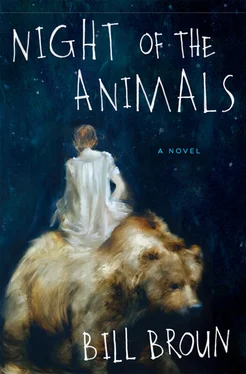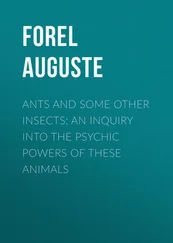An NHS Élite First Psyalleviator who kept tabs on several thousand other destitute mental cases, Reece calibrated medications on bulk database screens and, in short, superintended thousands of unwell brains. At the start of the exam, Cuthbert’s marshy smell of Flōt and old clothes so bothered him, Reece had immediately activated his high-priced olfactory CoreMods (as he often did with Indigents), an insult clearly visible to Cuthbert with the Psyalleviator’s telltale swipe of his nasal septum.
Like many of the aristocracy, his face looked weird, showing signs of various rejuvenating mods with telltale “cracks” in the facade. In the Viscount Reece’s case, his blue eyes had the watery, dull look of a man obviously older than 110 or so, which wasn’t particularly old by today’s standards, but the rest of his face belonged, cosmetically, to a twenty- or thirty-year-old man’s.
Cuthbert kept staring and smiling at the man, ruffling him mightily.
Animal conversationalist that he was, he also informed Dr. Reece that “your cat told me you bore him stiff.” The First Psyalleviator sniffed a little and stiffly tapped something into the SkinWerks skin-panel now glowing from the back of his officious hand.
Upon receiving Reece’s report and the accompanying documentation, Dr. Bajwa was forced to code Cuthbert as “severely mentally ill” as stipulated by NHS Élite digi-form B-810, or his patient would lose all public benefits, including housing.
Reece was also insisting Cuthbert be quickly “databased,” and Cuthbert, who had ended his encounter with Reece by singing what he called “My Song to Mice,” gave the Psyalleviator no reason to rethink the categorization. A databasing sanction would immediately slash his dole to £25 a week and end public transport privileges. Institutionalization, in an NHS Élite — approved Calm House, was next.
With Dr. Bajwa’s help, Cuthbert could try to appeal the decision, but he would have to be off Flōt completely for at least a month or two, and he would need to shut it when it came to hearing bloody animals and toe the Ministry of Mind’s lines.
It all struck Baj as impossible. Cuthbert, it seemed, was doomed.
Dr. Bajwa felt that he had betrayed his patient, too. The vile Reece, in an Opticall, indicated he could easily secure a bed for Cuthbert in the ill-famed old St. Clements Hospital in the Bow Road, in East London, and Baj didn’t immediately reject the idea. What had he done for Cuthbert, after all?
“It’s not like it used to be,” Reece claimed. It was now a dedicated Grade I mental hygiene facility, and every resident wore Nexar hoods for two hours a day. Through the hoods, Dr. Reece and a small team of other First Psyalleviators from EquiPoise attended to the brains of hundreds of thousands of mental patients — a whole British sea of pathogenic alpha waves.
This use of bioelectronic stimuli had saved taxpayers millions of pounds and provided a certain comfort to the sufferers themselves. It was for this reason, ostensibly, that King Henry IX, and even the Archbishop of Canterbury, Jessica Mackenzie, were always on the broadcast news to promote Nexar treatments.
“No one in our kingdom need ever suffer again,” a red-faced Harry often intoned before cameras, his eyes hard as sapphire and his neck bulging like a ripped rugby ball.
These days, the Sovereign always made such pronouncements from his bunker at Hampton Court Palace, ten miles west of central London, and far away from his psycho-dungeons like St. Clements, and surrounded by his heavily armed Yeomen of the Guard “Beefeaters.”
In their updated flat black helms and glossy red body armor, all clasping red pike-like medulla wave-guns, which could stop the heart and respiration instantly, the Beefeaters typified the reconfiguring of Britain’s turn-of-the-century Tourist Monarchy into a functional beast. Tudor roses, thistles, and shamrocks in gold paint decorated their breastplates and gunstocks. The Beefeaters no longer bothered to work inconspicuously. HRH Henry IX, long rumored to be responsible for the bombing of his elder brother King William’s personal jet in 2028, which killed the weak ruler and all his direct heirs, was all about aggression.
“Our Realm is compassion, and it is life,” the regicidal king liked to say, “and Nexar is a very clever way to dispense them both — it’s that simple.”
No one, including Dr. Bajwa, would question such notions openly and hope to get ahead professionally in the Britain of the 2050s, where it never paid to question the House of Windsor’s love of manipulating alpha waves. The suicide cults and British republicans were openly hunted, but apart from them, just one infamously rebellious former lord, the erstwhile Earl of Worcester, only nineteen years old and reportedly hiding underground on the Welsh border (he had sent mass Opticalls against the king’s power-grabs, until he was pushed off WikiNous’s optical nerves), seemed willing to risk a public confrontation. The king, for his part, laughed the boy off.
“We need our earls,” he liked to say plaintively. “I can’t be in the business of autocracy. Worcester needs to come out to Hampton for din-dins.”
It was said the young former earl, who had abdicated his ancestral seat, sent word that he would indeed accept a meal, but only “in front of the Banqueting House,” a defiant reference, of course, to the execution site of Charles I.
Hampton Court Palace was no longer home to flower shows and chubby Belgian tourists. The decision to turn it into the Sovereign’s heavily fortified seat of residence, and to give Buckingham Palace over strictly to England’s dying sightseer trade, was all based on Henry’s sometimes paranoid calculations about the exercise of, and defense against, military force. The maze and real tennis court were still there, but the palace’s perimeter was practically upholstered in powerful weaponry. There were advanced neural cannons, blood-gas beams, various sophisticated EMP emitters, and a rumored pièce de résistance — a dangerous, identity-wiping mobile mortar called Æthelstan’s Bliss.
This device, which purportedly resembled a sort of giant sea anemone with pink tentacles and, it was said, screeched like the golden dragons of ancient Wessex, entirely dissolved all traces of one’s existence, in both corporal and digital form.
ST. CLEMENTS’S REPUTATION was well known. Nexar-hooded or not, its patients almost never recovered. It was a grim, yellow-brick house of dread, built as a workhouse, and eventually one of the last Victorian asylums. A passé NHS Trust placard still appeared on its inevitable squeaking iron gate. It was, in Baj’s view, a national disgrace. The last time he had visited, it had been filled exclusively with crazy Indigents.
Out of a sense of responsibility, Dr. Bajwa decided to have another look at St. Clements after receiving Dr. Reece’s report. Perhaps it wasn’t quite as bad as he remembered. From the outside, surrounded by lime trees and pavements heavily trod by all manner of daydream carvers, roast pigeon sellers, house-bot repairers, etc., there was a sense of happy bustle. But once past the iron gate, Baj saw a familiar awfulness he associated with decrepit buildings where Nexar patients were usually warehoused.
An old caretaker with a pinched brow smiled as Baj approached the main doors.
“Lovely day,” the man said.
Baj looked up at a nearly cloudless cerulean sky, as if for the first time that year. Apart from a few cloud-doodles of elongated cats and crooked letters (“mums!”) by children, the sky was a happy blank.
“Yes!” he said. “It is lovely, isn’t it?”
Inside, he ambled slowly along. A few patients with simpering grins came up to him and shook his hand. The main common area of the hospital had a strange, nicotine-stained cornice molding — (yellowed) acanthus leaves and all — along the tops of the walls. Some well-intentioned staff member had allowed one of the patients, obviously, to decorate the molding. In delicate blue, yellow, and red hand-painted lines, all the way around the room, was a constellation of mathematical gibberish — direct sum-of-module symbols, various integrals, Euclidean distance marks — interspersed with the silhouettes of lions and some other, vaguer creature — a weasel or ferret or indeed otter or something?
Читать дальше












